
Carmona is a town of southwestern Spain, in the province of Seville; it lies 33 km north-east of Seville.

The monumental complex of the Basilica and Convent of San Francisco of Lima, also known as "San Francisco el Grande" or "San Francisco de Jesús", is located in the Historic Center of Lima, Peru. This church together with the Sanctuary Nuestra Señora de la Soledad and the Church del Milagro set up one of the welcoming and artistic corners of Lima. Ramón Menéndez Pidal, Spanish philologist and scholar in this regard commented: "It is the largest and noblest monument that the conquest erected in these prodigious lands".

Arahal is a municipality in Seville, Andalusia, Spain. It is situated on the southeast of Seville. This town is also known as "El Arahal", being recognized by this name until 1981. Ar-rahal is an Arabic term, meaning a place in the path where stopping to rest.

Belalcázar is a municipality and city in the province of Córdoba, Andalusia, southern Spain. Belalcázar s located approximately 100 km from Córdoba city.

Llerena is a municipality located in the province of Badajoz, Extremadura, Spain. According to the 2007 census (INE), the municipality has a population of 5,995 inhabitants. Llerena, a town that declared itself a Historical Artistic gathering on December 29, 1966, is located in southwestern Spain. The head of the judicial and economic center of the region of the country of the same name, it is equidistant from 20 municipalities, and sits at the confluence of the District 432 and 413 National Roads.

The Royal Convent of Santa Clara is a nunnery in Tordesillas, Spain. Founded by king Pedro of Castile in 1363, this convent of Poor Clares is now under the administration of Spain's national heritage organisation, the Patrimonio Nacional.

The Seville City Hall is a Plateresque-style building in Plaza Nueva in Seville, currently housing the City Council of Seville.
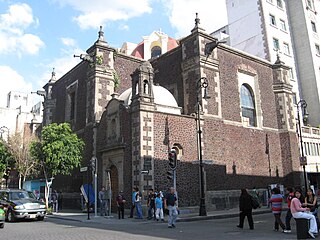
The Library of the Congress of Mexico mostly contains the records of the country's legislative sessions since its Independence. It is located at 29 Tacuba Street, near the corner with Bolivar in the historic center of Mexico City. This structure was originally part of a Poor Clares convent founded in the 16th century, but was confiscated by the Reform Laws of the 19th century. Since then, this building has been used as government offices, barracks and even a canteen. It current use was established in 1962, when the Library of Congress was founded by the Mexican government. Since then, the archives it houses have outgrown the building and a number are housed at the Palacio Legislativo de San Lázaro as well.

Santa María Magdalena is a Baroque church in Seville, southern Spain. It was built in 1691-1709 to a design of architect Leonardo de Figueroa.

Astudillo is a Spanish municipality in the autonomous community of Castilla y León belonging to the province of Palencia. It is located 29 km (18 mi) northeast of the provincial capital, and has 1,106 inhabitants (2011) with an area of 122.95 km2 (47.47 sq mi).

The Church of Saint Anthony and Saint Clare is a Roman Catholic parish church in Montevideo, Uruguay.
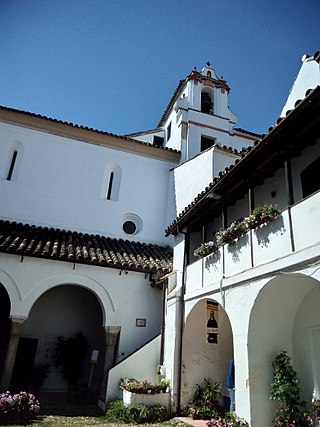
Convento de Santa Cruz is a convent situated in the historic centre, barrio de San Pedro, Córdoba, Andalusia, Spain. It was founded in 1435, by Pedro de los Ríos y Gutiérrez de Aguayo and his wife, Teresa Zurita. The building has always been closely linked to the Ríos family, which were adding new spaces to the original project, resulting in an interesting building composed of different structures organized around courtyards. It is notable for its originality, its architecture, and the artistic setting. These include the cloister, convent, church, house of the novices of the eighteenth century, and courtyard. In the main structure, there are architectural elements in Roman, Muslim, Moorish and baroque styles, which witness the historic and artistic development of Córdoba. The retablos which decorate the church interior, tiling, and paintings are of note. It was declared a Bien de Interés Cultural site in 2011.
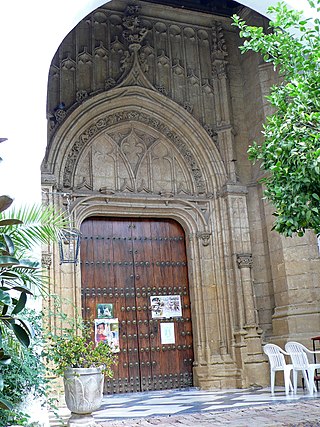
The Convento de Santa Marta is a convent in Córdoba, Spain, on Calle de Santa Marta. Founded in 1464, it belongs to the female branch of the order Hieronymites.

Santa María Magdalena is a church in Córdoba, Spain, built in the Mudejar style. It forms part of the Historic centre of Córdoba, a UNESCO World Heritage site, and is named after Jesus' companion, Mary Magdalene.
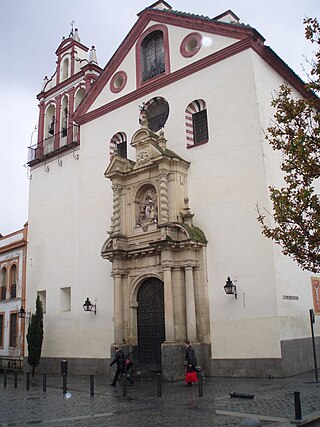
San Juan y Todos los Santos, also known as Iglesia de la Trinidad, is a Catholic church located on the Plaza de la Trinidad in Córdoba, Spain. It stands on the site of the former Convento de la Trinidad established shortly after Fernando III conquered the city in 1236. Built in the Baroque style, it forms part of the Historic centre of Córdoba, a UNESCO World Heritage site.

The architecture of Madrid has preserved the look and feel of many of its historic neighbourhoods and streets, even though Madrid possesses a modern infrastructure. Its landmarks include the Royal Palace of Madrid, the Royal Theatre with its restored 1850 Opera House, the Buen Retiro Park, the 19th-century National Library building containing some of Spain's historical archives, a large number of national museums, and the Golden Triangle of Art located along the Paseo del Prado and comprising three art museums: Prado Museum, the Reina Sofía Museum, and the Thyssen-Bornemisza Museum, which completes the shortcomings of the other two museums. Cibeles Palace and Fountain have become the monument symbol of the city.

The Convento de Santa Clara la Real is a convent of the Poor Clares located in the city of Toledo, Castile-La Mancha, Spain. The present convent was founded in the middle of the 14th century by Toledan noblewoman María Meléndez, and is located near other monasteries of note, such as the monastery of Santo Domingo el Real and the Convent of Capuchins of Toledo.

The Convent of St. Clare is a former cloistered convent of the Order of Poor Clares, located in the city centre of Pontevedra, Spain, precisely in Santa Clara Street, near the disappeared St. Clare Gate of the medieval city walls. Founded in 1271, the convent closed in 2017. In 2021 the City Council bought the building from the Order, and in 2023 it transferred it to the Provincial Deputation to become part of the Pontevedra Museum.
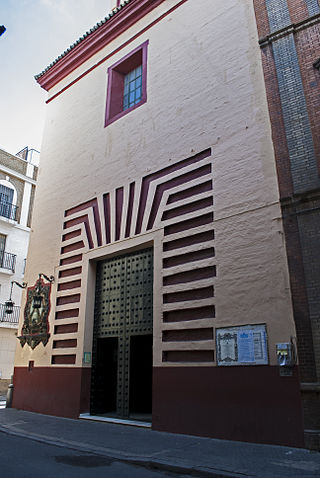
St. Buenaventura's Church is situated in the calle Carlos Cañal in the Casco Antiguo of Seville, Andalusia, Spain. It was the church of the Franciscan College of San Buenaventura that was destroyed in the 19th century.
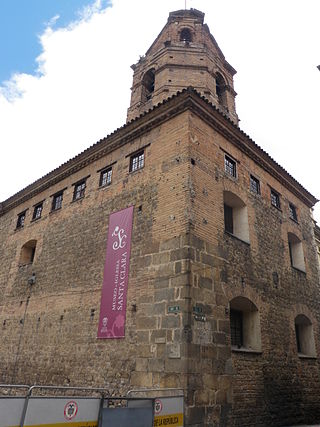
The Santa Clara Museum occupies the space of the church of the old Royal Convent of Santa Clara, completed in 1647. It is located in the Historic Center of Bogotá (Colombia), on Carrera 8 No. 8-91. It has an extensive collection of paintings and sculptures from the 17th, 18th, 19th and 20th centuries. The building is considered one of the most representative samples of the architecture and Baroque decoration of the 17th and 18th centuries in Bogotá. This museum is an entity of the Ministry of Culture.




















